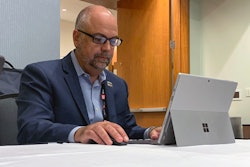When I was in high school in the 1970s I would bet money today my initial thoughts on stereotypes included Panasonic, Sony, Technics, Bang & Olufson Blaupunkt.
Going to college I had the fortune to join the student chapter of ASME and work with an amazing mix of ethnicities, genders and nationalities. I had grown up reading mountains of discarded Aviation Week and Space Technology magazines, courtesy of an academic neighbor.
I had seen countless pictures of male NASA space program engineers sporting the corporate uniform of white shirts, ties, and, yes, the enviable pocket protectors, usually at control terminals or bent over fields of drafting tables each with its coveted mechanical drafting arm. So going to college I was amazed. Not only were women pursuing engineering careers, but also they were impressive student leaders.
I landed a summer coop job as a civilian engineer working at a Navy engineering facility in Washington state. Fortune had it that I was assigned to the sole female lead engineer at the site, a woman in her late 40’s. I didn’t think twice about it then, but ever since, I have pondered just how hard a road she had traveled to get there in the male dominated industry of the 1960s and 1970s. I have also thanked karma for giving me that first real exposure to diversity.
After graduation, I went to work for Lockheed, a major aerospace company that was desperately staffing up engineers from colleges to fill a void in hiring from 1970s layoffs due to cancellation of programs. They had just landed a massive contract for new missiles, with aggressive schedules for fleet deployment. They did not have time or patience for bias in hiring. If you had good potential, you were hired. Literally hundreds of engineers per month were hired and sped through orientation with three six-week rotations in different departments so both you and management could figure out where you best fit. Not unlike baseball farm teams.
I found out later that one of those women ASME student leaders from my university who had been hired few years before had got my resume in front of human resources. She was also not averse to hiring based on skills with no regard for my gender or race.
The shortage of middle managers meant star performers fast tracked up the management chain. Many women became supervisors and later group and department managers.









